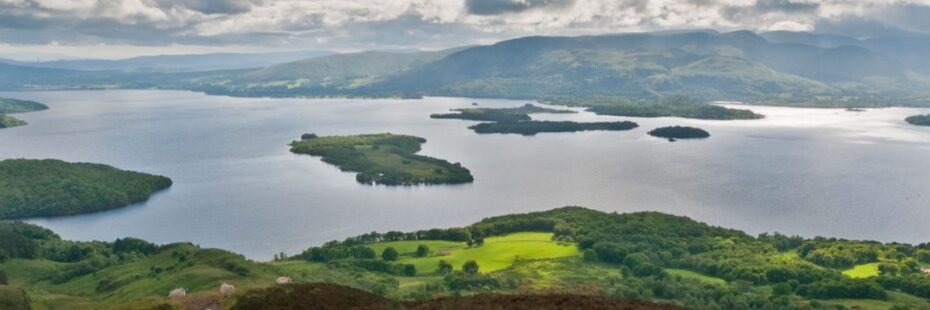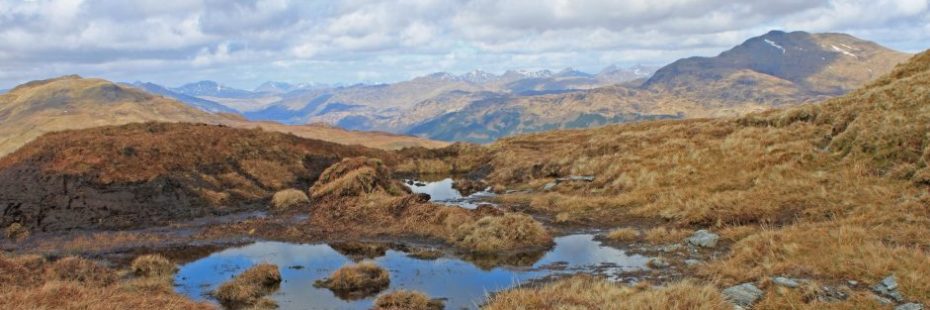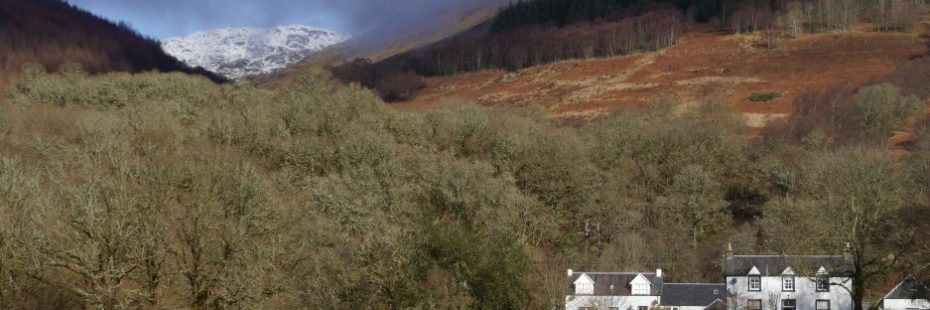
Conservation Outcome C3:
The natural environment of the Park is better managed to help mitigate and address the impacts of climate change.
Why is this outcome important?
The impacts of climate change present very real challenges to our native habitats and species and to our communities and economy in the National Park, particularly in relation to the increasing frequency of flood events and loss of biodiversity. Large areas of the Park including the Loch Lomond basin, Loch Earn basin, The Forth and Teith, Strathfillan and coastal areas round Loch Long fall within Potentially Vulnerable Areas to flooding.
As seasonal temperatures and rainfall patterns continue to rapidly change we will see some of our species put under the dual pressures of adapting to a warmer, wetter climate and the emergence of new plant diseases.

Loch Lomond
More prolonged and intense periods of rainfall have seen some of our grazed hillsides become saturated, contributing to some major landslides and significant disruption to strategic transport routes, such as the A83 at The Rest and be Thankful and the A85 at Glen Ogle.
These threats require us to work to create more dynamic and resilient natural ecosystems where habitats are allowed to adapt to a changing world. For example, alternative management in some upland areas could reduce the risk of downstream flooding events (see case study below).
The Park Authority has a key role in contributing to adaptation and mitigation of climate change effects, including working with others to reduce carbon emissions and to capture carbon stores.
Our priorities for action:
Conservation Priority 7
Our focus will be working with partners and communities to build resilience and mitigate climate change impacts by collaborating on land use and water management initiatives such as:
- Natural Flood Management;
- Woodland enhancement;
- Peatland restoration projects upstream of flood risk communities, including Aberfoyle and Callander.

Peatland restoration project
Conservation Priority 8
By prioritising collaborative land use and water management enhancement projects, we will help to support the implementation of the Clyde and Loch Lomond, Forth, and Tay Flood Risk Management Plans that cover the Park.
Who can help make this happen?
| LEAD DELIVERY PARTNERS INCLUDE: |
| Scottish Natural Heritage |
| Scottish Environment Protection Agency (SEPA) |
| Scottish Government Rural Payments and Inspections Division (RPID) |
| Confederation of Forest Industries |
| SUPPORT DELIVERY PARTNERS |
| Private Land Managers |
| Local Authorities |
| Scottish Land and Estates |
| National Farmers Union of Scotland |
| Scottish Water |
How will we measure success by 2023?
- Land Management – The percentage of land under agri-environment/woodland schemes, whole farm/estate plans and/or management partnerships (e.g. Deer Management Groups).
- Flooding – The review of Flood Risk Management Plans.
- Carbon – The percentage of land under woodland and the percentage of restored peatland.
Case Study: Ecosystem Services Strathard Project
‘Ecosystem Services’ are environmental processes that create natural resources used by us all, such as clean air, water, food and materials. This exciting partnership project aims to identify land management solutions in Strathard that will reduce flood risk downstream in and around Aberfoyle. It will also deliver other improvements to the local environment and wildlife, helping to manage natural resources sustainably in a changing climate.Working with Forest Enterprise, Scottish Environment Protection Agency, Stirling Council and The Community Partnership in Loch Lomond & The Trossachs National Park Area we supported the launch of the project and this year it delivered:
- Land management and Natural Flood Management opportunity maps.
- Baseline data gathered on current land management practices and identification of stakeholders and community groups who use the area.
- Improved engagement with the Strathard community.Next year will see the delivery of an integrated land and water management action plan in order to deliver Natural Flood Management within Strathard.

Kinlochard Farm
Questions
|
<< Previous outcome | Next outcome >>

